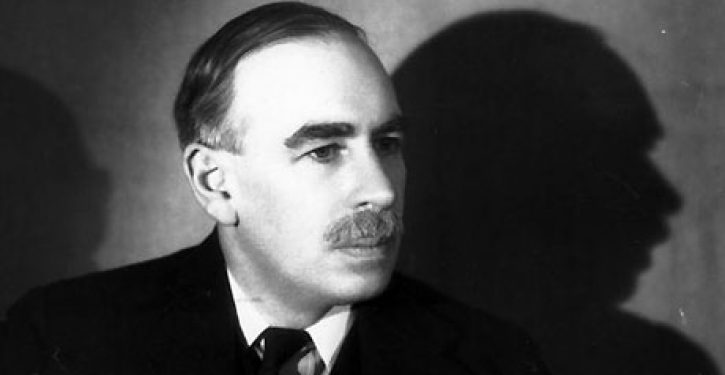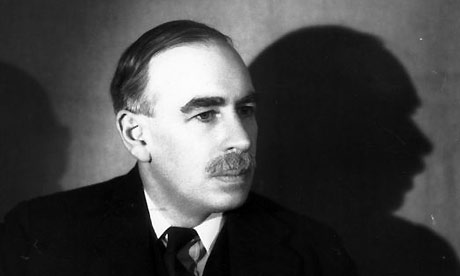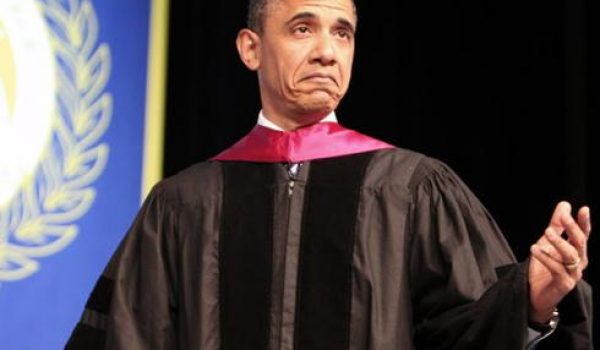

The latest economic report shows that economic growth registered a negative 0.1 percent last quarter. The popular explanation, especially among “Keynesian” economists, attributes the decline in output to a drop in defense spending. This analysis misses the mark.
The Center for American Progress reasons that the economy “most certainly would have grown at a faster rate were it not for … the risk of sharp fiscal contraction in the form of the pending automatic ‘sequestration’ budget cuts.” Likewise, the Center for Economic Policy Research’s Dean Baker notes that “Government spending fell at a 6.6 percent annual rate, driven by a 22.2 percent decline in defense spending, subtracting 1.33 percentage points from the growth rate in the quarter.” Distinguished professor and economist Mark Thoma adds that “we need more spending on infrastructure to help with the recovery.”
Keynesian theory holds that one person’s spending is a second person’s income, and the second person’s spending is a third person’s income, and so on throughout the economy. When recession hits, total spending falls, which means incomes and employment drop, which further depresses spending, rendering even less income and fewer jobs, and so goes the downward spiral. The policy prescription is for government to step in and spend to prop up “aggregate demand.”
The flaw in this logic is that government spending cannot increase aggregate demand. Even though aggregate demand is often treated as an independent variable, the reality is that it’s an inevitable consequence of production; to increase aggregate demand, production must increase. Keynesianism misdiagnoses cause and effect. Consider the following scenario.
If we start an economy from scratch on an island, and person A desires the sandals that person B produces, how does person A acquire them? Does he simply demand that Person B give over the sandals with nothing to exchange for them? Of course not. Person A must earn an income by making his own product—say, a spear—in order to trade his income for Person B’s sandals. Production precedes demand.
The problem with government spending is that it does not stimulate production; it attempts to simulate its byproduct, demand. It would be like trying to grow a flower by watering its petals rather than its roots. Therefore government spending merely shifts the composition of total demand around without expanding it. Why? Because our financial system ensures that all income produced is applied as demand in the economy. As I’ve written before:
Any dollar of income an individual produces gives that individual the choice of either spending that dollar on a good or service, or saving that dollar by putting it in the bank. Either choice affects economic output equally. Spending the dollar contributes to gross domestic product (GDP). Saving the dollar allows the bank to loan it to someone else to spend—also contributing to GDP. When people are hesitant to spend and banks hesitant to loan and thus total savings increase, banks invest savings in T-bonds to earn interest. This channels savings toward someone who will spend them on goods or services, again equally contributing to GDP.
Keynesian economics is thus in a quandary: It is not the circular flow of spending that is of primary importance, as the theory suggests, but rather the production which begets a vibrant economy of exchange.
In case one thinks this mere theory, consider data from the Organization for Economic Co-operation and Development (OECD), as summarized by economist John Lott:
Using the latest Organization for Economic Co-operation and Development (OECD) data for all 32 countries that it is available for, there’s a strikingly clear relationship. The countries with the largest stimulus programs suffered the most during the recessions. The more they increased spending or the more they increased their deficits, the worst they did.
So, how to explain the recent economic report? A better explanation is the paralysis of business investment created by the fiscal cliff coupled with the explosion of tax hikes on income, investment, dividends, payroll, and others that recently took effect, which depress economic activity, and which history demonstrates always damage an economy.
This is yet another nail in the Keynesian coffin.



